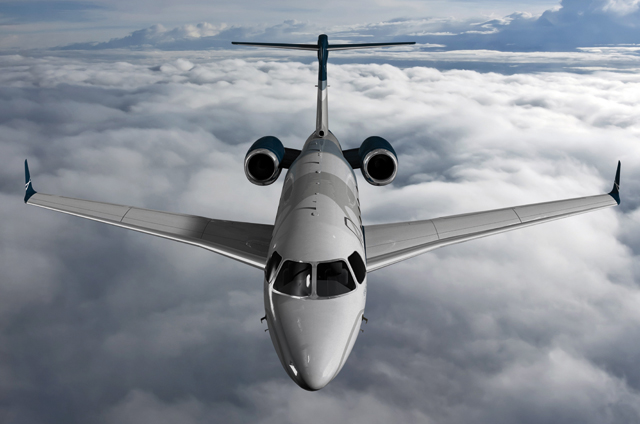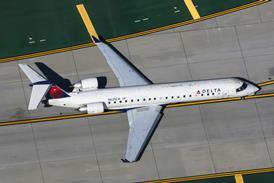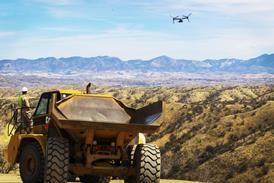The 12th Latin American Business Aviation Conference & Exhibition will open its doors on 11 August in a region mired in political and economic instability.
The three-day annual event – held at Congonhas airport, São Paulo, Brazil – is now a permanent fixture on the aviation calendar thanks to the significance of the region to the business aircraft industry.
With an installed base of more than 2,700 business jets and turboprops, Latin America is home to the third largest business aircraft fleet by continent, after North America and Europe. While its position on the continental fleet roster is assured for some time to come, Latin America is losing its lustre as the deepening financial crisis takes its toll on new aircraft sales.
“While the region provided a consistent stream of business jet orders during the worst of the worldwide financial crisis, the pendulum has now swung the other way, which is simply part of the ebbs and flows of economic market cycles,” says aerospace analyst Brian Foley.
This malaise is likely to continue until the end of the decade, he predicts. “Based on the amount of time it has recently taken other business jet markets to recover, it’s not inconceivable that Latin America could be sub-performing for the next five years,” says Foley.

Stephen Trimble/Flightglobal
Blighted Brazil
The economic misery has been felt most acutely in the region’s powerhouse and business aviation beacon, Brazil.
This country is home to the largest and youngest business aircraft fleet in Latin America and the biggest inventory outside the USA. Its installed base of around 800 business jets and 700 turboprops represents about 55% of the Latin American fleet, with Venezuela and Argentina a very distant second and third, respectively.
As with the rest of the continent, Brazil is experiencing one of its worst financial downturns in more than a decade and the short-term prospects for the world’s seventh-largest economy are grim.
“This uncertainty is impacting heavily on sales of new and used aircraft, which have dropped to critical levels,” says Eduardo Marson, chairman of Brazil’s business and general aviation trade body, ABAG.
“People are either unwilling to purchase aircraft or are delaying their decision until there is a turnaround in the economy. This won’t happen for a while,” he predicts. “It’s really tough.”
Compared with previous downturns, however, Marson observes there is a trend for owners to hold on to their assets rather than sell them to free up liquidity. “In the past financial downturns, owners would sell their assets, usually abroad, and this would be reflected in the declining fleet numbers,” he says.
“This isn’t happening this time around. There is a huge value attached to owning and operating an aircraft within this vast country,” adds Marson, who is also the president of Brazilian helicopter manufacturer and Airbus Helicopters subsidiary, Helibras.
Brazil’s huge land mass has been a key driver in the growth of business aircraft in the region.
The country has 5,600 cities, but fewer than 130 of these are served by scheduled airlines. In contrast, there are 4,000 airports and aerodromes in Brazil, of which business aircraft, according to ABAG, serve the majority.
"Business aircraft are critical to the development of Brazil,” says Marson. “They open up new towns and cities by providing a transportation link to the remotest areas. Propeller-driven aircraft are a lifeline to many communities and businesses."
Marson’s view is supported aerospace analyst Rolland Vincent. He believes business aircraft’s hallmarks of convenience and flexibility have been instrumental in their gaining widespread acceptance with owners and operators throughout Latin America and in Brazil in particular.
“It’s a large, populous nation with entrepreneurial cultures, clutches of highly successful, high net worth individuals (HNWIs) and limited commercial air service networks and infrastructure,” he says.

The in-development Legacy 450 will make its Latin American debut at LABACE, with service entry planned for later this year
Embraer
Wealthy elite
Latin America has by far the largest number of business jets per wealthy individual of any major world region, Vincent reveals. He singles out Brazil, with 5.2 jets per 1,000 HNWIs. “This compares favourably to North America – 2.7 jets per 1,000 HNWIs – but especially to Europe and the Asia-Pacific with 0.6 jets and 0.2 jets per 1,000 HNWIs respectively,” says Vincent.
It is a view echoed by Marson. He points to the recent trend in Brazil towards owned and managed aircraft and away from the traditional charter market. “Access to business aircraft by companies and individuals was usually through an air taxi operator,” he explains. “But in recent years there has been a shift towards outright ownership, particularly amongst those companies, private owners and entrepreneurs who use business aircraft regularly,” he says. “While aircraft are now being sold in fewer numbers [compared with the boom years of the mid- to late 2000s], the value placed on these assets is just as important.”
Elsewhere in Latin America, the business aviation landscape is equally fragile. Venezuela and Argentina – with fleets of 595 and 268 respectively – are both steeped in recession and the prospects for new business aircraft sales are poor.
The economies of Chile and Colombia are growing, but the rich pickings are minimal given their tiny share of the Latin American fleet.
Durable LABACE
Despite the gloomy backdrop, ABAG is hoping Latin America’s only business aviation showcase will be a success. Around 70 exhibitors have committed so far, including all the major airframers and LABACE regulars: Bombardier, Dassault, Gulfstream, Textron and local player Embraer, which launched its business jet division at the show 10 years ago.
“This year’s LABACE is bigger than the 2013 event and about the same size as last year’s,” says Marson. “This is pretty impressive given the dire economic climate.”
The static area at Congonhas will be home to around 70 aircraft including a VIP configured ATR 72, which is making its show debut along with the in-development Legacy 450. LABACE marks the first public outing in Latin America for the latter, a super-light business jet that is earmarked for certification and service entry this year.
Congonhas airport has been home to LABACE since the show’s inception. However, as the show has grown in size and stature, many exhibitors and visitors believe it has outgrown the venue. They have called for it to be shifted to a larger site within São Paolo, such as Campo de Marte in the north of the city, which is close to the financial district.
Relocating the show to a larger, fresher venue will not only give the exhibition more breathing space, they argue, but would also reflect the importance of this niche industry to the Latin American market. Says Vincent: “It is time to showcase this major industry event at a new location that provides ample space – this would be a significant improvement over today's venue.”
While LABACE's location may be causing come disquiet, industry's long-term confidence in the Latin American market remains undiminished. In its latest 10-year market forecast, Embraer predicts demand for 850 new business jets worth $16 billion, with Brazil continuing to account for the bulk of the sales.
“In spite of economy recession nowadays, we still see the country as an important market,” says Embraer, which is close to delivering its 200th business jet on the continent. "LABACE will continue to be a great show to promote our products and services in the region.”
Source: Flight International























